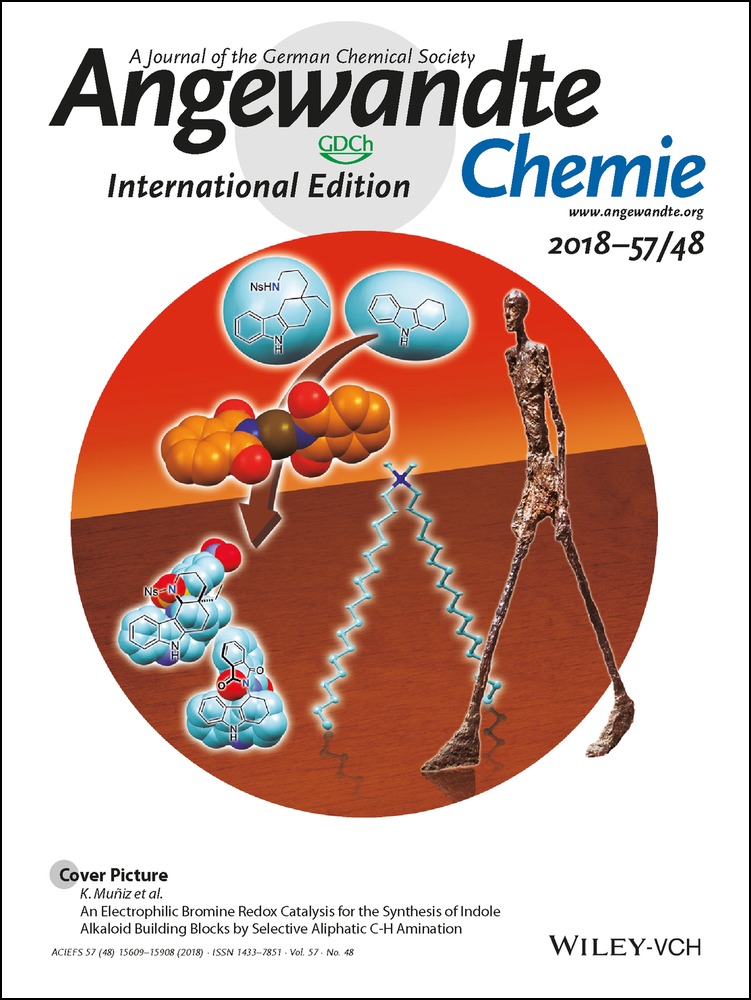Empowering Students to Innovate: Engagement in Organic Chemistry Teaching
Graphical Abstract
As a “pre-med” student at NYU, I took chemistry courses out of necessity. “OChem” in particular was reputed to be an intense weed-out class that required exhaustive memorization and regurgitation of information. On our first day of class in 1997, Professor Yorke Rhodes convinced us otherwise. He told tales of the great contemporary organic chemists who were educated at NYU, such as Professors Eric Jacobsen and Al Myers, along with recent graduate Phil Baran, who was already a rising star in graduate school at the time. He also explained that organic chemistry was not about memorization. Rather, it was about problem solving and creativity. I admit it took some time for me to see organic chemistry the way Professor Rhodes intended, but I remember the day it clicked. We had been studying electrophilic aromatic substitution. At a problem solving session, I panicked at having a different answer to a synthetic problem compared to what was written on the answer key. I initially assumed my answer was incorrect, but then managed to gain the courage to ask what was wrong with my solution. Professor Rhodes replied “what makes you think your answer is wrong?” Upon reviewing my solution, Professor Rhodes affirmed my answer was perfectly acceptable and even commended me for coming up with an alternate solution. I realized the beauty of organic chemistry and how different it was compared to the other science classes I had taken. I had become accustomed to reciting information, mindlessly plugging numbers into equations, and just guessing on deliberately tricky multiple-choice questions. Organic chemistry on the other hand, was a vehicle for me to think outside the box and create new solutions to challenging problems.
Fast-forward 10 years and I had begun my independent career at UCLA. In 2010, I taught my first large organic chemistry class, which was a class for our life-science majors (in other words, non-chemistry and non-biochemistry students). The majority of students in the class hope to pursue medicine and initially have little interest in organic chemistry, as shown by student surveys. Thus, I adopted a “Rhodes-like” strategy to focus the class on problem solving and creativity. I should note that this class, “Chem 14D”, is the second half of the organic chemistry sequence, where the students had already learned structure and spectroscopy, but not a single reaction. Thus, my role was to teach all of the usual organic chemistry reactions, in a fast-pace 10-week class, to nearly 400 students predominantly interested in health-related professions.
The art of engaging large volumes of students in organic chemistry is a topic that I cannot do justice to in this Editorial. However, with regard to the mission of making the class about problem-solving and creativity, I have found it is necessary to review key concepts students should have already learned in prior courses, teach new vocabulary, and then, as quickly as possible, transition to problem solving. In my case, just 3–4 weeks into the course, students are introduced to retrosynthetic analysis and begin to apply this technique to solve relatively easy synthetic problems. As they learn another 15–20 chemical reactions over the next several weeks—with much support and encouragement from me and the teaching assistants—the students become masters at constructing complex chemical structures (on pen and paper, at least). When designing challenging synthetic problems for the students to solve, we deliberately plan for there to be at least two or three plausible solutions. We let the students know that there is always more than one reasonable solution and that they will get full credit for reasonable answers that deviate from what is shown on the answer key. Students are reminded that we welcome their creativity and that, in real life, out-of-the-box innovative thinking is typically cherished.
Students in my classes are also given an assignment to make production-quality music videos. Science-related music videos have become widespread today, but in 2010 when I first offered this assignment, music videos about science were scarce, if they existed at all. In fact, the assignment initially received mixed reviews from faculty members, especially some of the more traditional ones. Students can work individually or in groups of up to four students, and post their video on youtube.com for everyone to see. The teaching assistants and I then watch and grade every video based on incorporation of organic chemistry and overall entertainment value. The music video grades translate to a nominal amount of extra credit points. To date, the assignment has been tackled by well over 1000 students, leading to the production of more than 500 music videos. Perhaps it is because of UCLA's proximity to Hollywood, but many of the videos are of stunning quality. Some videos, like Chemistry Jock, have been viewed over 100 000 times alone and, collectively, the Chem 14D music videos have been viewed many hundreds of thousands of times globally. Some of the best videos can be viewed in the Chem 14D Music Video Hall of Fame.
Beyond the online views, the impact of the music video project on the students in the class should be emphasized. In order to make a great video, the students must master a great deal of chemistry. They also learn by watching the music videos created by their classmates. The majority of students work on their videos in small groups, which leads to a spirit of teamwork and a breakdown of the traditional competitive feeling. Most notably, students begin to associate organic chemistry with fun, creativity, and innovation. In turn, this leads to increased engagement and empowers students to embrace the challenging course materials.
The final exams given in my course always have a few synthetic problems where the level of challenge borders on “impossibility” in the eyes of the students. What is most exciting to see is that two-thirds of the students are able to solve these problems each year, often with solutions that deviate significantly from those shown on the answer key. For comparison, I did not learn to solve synthetic problems of comparable difficulty until my first year of graduate school at Caltech. However, the majority of pre-med second-year undergraduate students in my class are able to solve the “impossible” problems. What is also striking is the overall correlation between the ability to solve the most challenging problems and student interest in organic chemistry. At the end of the course, more than 65 % of the students rate their interest in organic chemistry as “high”, as opposed to less than 10 % at the start. Similarly, there is a dramatic shift in the “low” subject interest rating from more than 60 % of students reporting “low” interest at the start to less than 4 % at the end. When students see the connection between organic chemistry and innovation, perhaps both from the problem-solving standpoint and the music video project, their perception of the subject changes dramatically. In this way, thousands of pre-health students at UCLA have developed an appreciation, and in some cases, a love for organic chemistry.
Recognizing the extraordinary potential of our students to innovate, I now collaborate routinely with students to develop modern educational resources. Students jump at the opportunity to volunteer on such projects or can receive course credit at UCLA for their participation through an undergraduate apprenticeship. I have worked closely with graduate and undergraduate students on Biology And Chemistry Online Notes, which we affectionately called BACON for short. The website, learnbacon.com, provides organic chemistry tutorials that connect classroom concepts to real-life, biology- and medicine-related topics, and even pop culture. BACON has been used by more than 30 000 students around the globe to help increase student engagement and general appreciation for organic chemistry.
More recently, I teamed up with students and long-time friend Dr. Daniel Caspi to develop new, no-cost smartphone technologies. In 2018, we released the iOS application Backside Attack. Through a game-like interface, the app helps students learn the SN2 reaction, which is often one of the first organic chemistry reactions students are exposed to. Many common factors associated with chemical reactions, such as leaving group ability, nucleophilicity, steric factors, and solvent effects, are covered in a fun way. Another resource released this year is QR Chem (qrchem.net). The website allows users (e.g., teachers and researchers) to generate smartphone-recognizable Quick Response (QR) codes that link to interactive 3D chemical structures. The QR codes are easily incorporated into presentations or handouts, so if employed in a classroom setting, can be used to teach students stereochemistry and other aspects of chemical structures and bonding in a highly engaging manner. We hope these educational tools will benefit large volumes of students around the world, while fostering a growing appreciation and fondness for organic chemistry. Moreover, what makes these resources fun, contemporary, and ultimately impactful are the countless creative ideas generated by the students collaborating on the projects.
My fellow educators will appreciate how much of a downer it is when students seem interested in only their grades. On the other hand, many of us live for those moments where students embrace the subjects we love and show genuine interest in learning. Educators, including those like me with active research programs, should focus on understanding the student mindset and considering ways by which we can better engage our students. We owe it to our students (and to our field) to ensure they have great experiences in their chemistry classes, especially their highly influential introductory courses.
Students are creative and they love to solve tough problems. We need to support them as they learn, and give them opportunities to recognize their own potential—just as Rhodes did for me just over two decades ago. Allowing students to innovate is a winning formula. Opportunities to observe student innovation—whether it is in an organic chemistry music video, an unexpected solution to a synthesis problem, or in the creation of a new educational tool—have been some of the most cherished and inspiring moments of my career.






